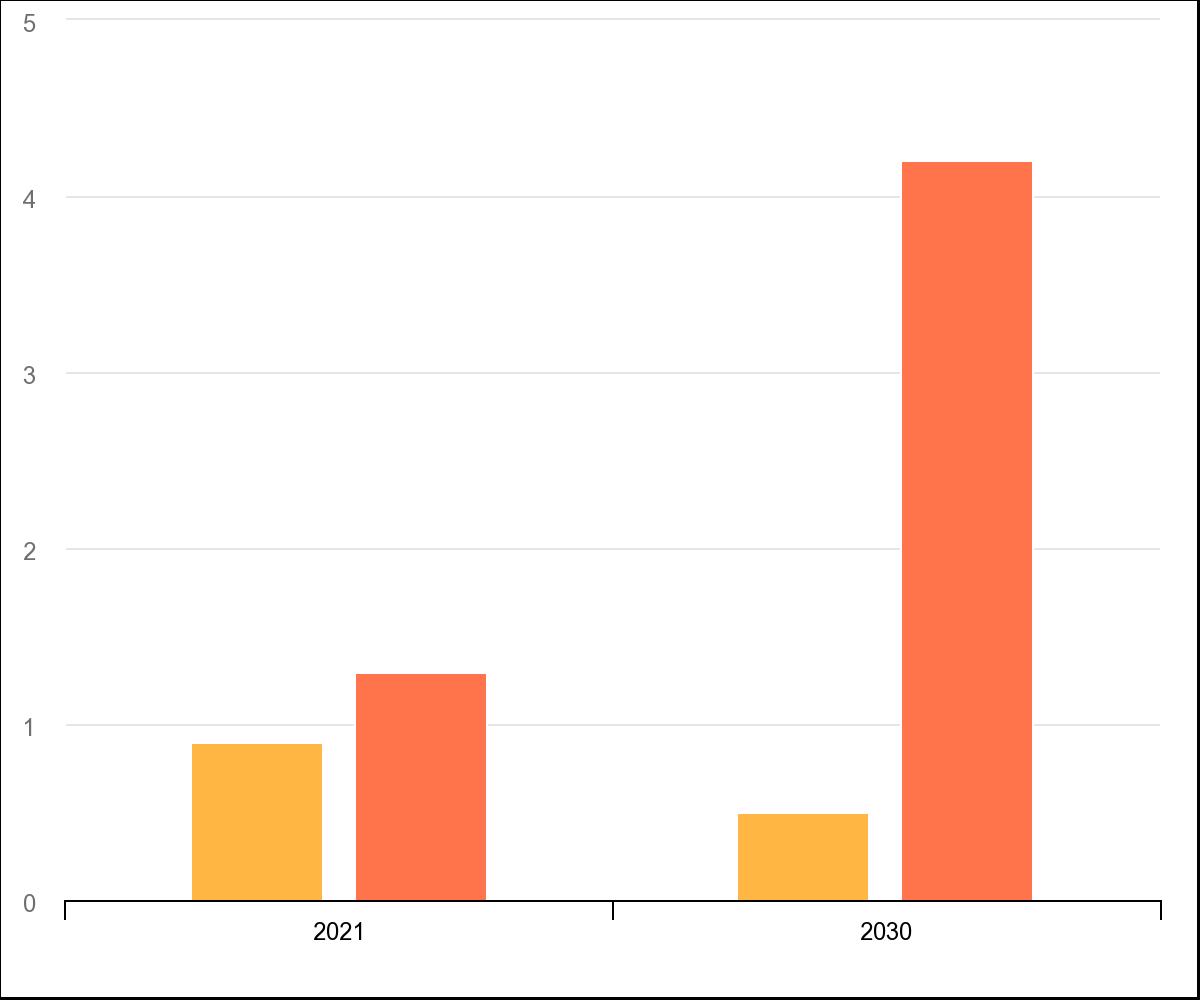Global energy crisis a ‘historic turning point’ towards green energy transition – IEA
Global carbon dioxide emissions will peak in 2025 as a result of massive government spending on clean fuels in response to Russia's invasion of Ukraine, according to the International Energy Agency (IEA).
 CHART: Energy sector investments in fossil fuels (yellow) and clean fuels (orange) between 2021-2030 in a net zero scenario. IEA
CHART: Energy sector investments in fossil fuels (yellow) and clean fuels (orange) between 2021-2030 in a net zero scenario. IEA
The IEA answers its own rhetorical question of "whether the crisis will hamper clean energy transitions or will catalyse faster action" by stating that Russia's invasion of Ukraine has altered energy markets and policies for "decades to come", in its latest world energy outlook.
This view was recently also shared by Trafigura's global head of fuel decarbonisation Rasmus Bach Nielsen, who told a conference: “I think Putin has pushed it at least five years forward, if not ten," according to Tradewinds.
Global investments in low-carbon energy such as solar, wind and nuclear power are set to rise by more than 50% to $2 trillion/year by 2030 on a current trajectory.
 CHART: Trillions of US dollars in clean energy investments in advanced economies (light blue), China (dark blue) and emerging and developing countries (green) between 2015-2030, based on stated policies. IEA
CHART: Trillions of US dollars in clean energy investments in advanced economies (light blue), China (dark blue) and emerging and developing countries (green) between 2015-2030, based on stated policies. IEA
But twice that investment in clean energy is needed for the world to get on a path towards meeting a net zero carbon emissions target by 2050, the IEA has calculated. That illustrates the magnitude of the challenge.
In the IEA's net zero emissions scenario, for every dollar spent on fossil fuels, $5 will have to be spent on clean energy supply, and another $4 on efficiency by 2030.
Energy crisis a boon in disguise
Europe has taken it upon itself to speed up the transition to renewable energy as a result of the energy spat between the continent and Russia.
Governments across Europe are not only developing new carbon-reduction policies but also seeking faster deployment of renewables - involving a wide variety of public and private stakeholders.
The IEA projects that European oil and gas demand will have fallen by 20% from today to 2032, and coal demand by 50%.
The UK is working to develop nuclear technology as a renewable energy source to reduce its energy dependence. Earlier this year, it committed to delivering 24 gigawatts of nuclear energy by 2050.
The IEA predicts that the world's top three biggest oil-consuming nations - the US, China and India - will speed up their transitions to renewables amid warnings of eroding global spare capacity to produce crude oil and tightening supplies.
China has set out to build out massive amounts of clean energy production capacity by the end of this decade. India will use renewable energy to generate nearly two-thirds of its electric power demand. The US will add 2.5 times more solar and wind power than it has today by 2030, and electric car sales are set to grow seven-fold.
Japan and South Korea will pump funding into low-emission hydrogen and ammonia technologies, as well as nuclear power.
Recent supply-side developments in green bunkering
Among nations that are focusing on producing green fuels, Oman has declared its intent to produce 1 million mt/year of green hydrogen by 2030. The governments of Panama, Norway and Uruguay have joined Canada and the UAE's ‘Clean Energy Marine Hubs’ initiative to advance production, export and import of low-carbon marine fuels across partnering countries.
Danish shipping company A.P. Moller – Maersk has inked a deal with Egyptian authorities to accelerate production of green fuels in Egypt towards the global transition to net zero shipping. The companies will target fuels with zero-carbon potential like hydrogen, and its derivatives and synthetic fuels.
Yara Clean Ammonia, a unit of fertiliser company Yara International, has joined a trial project to test a new way of producing green ammonia through a technology being developed by fellow Norwegian tech company Hystar.
Dutch LNG and liquified biomethane bunker supplier Titan has set out to build and operate the world’s biggest bio-LNG plants with a capacity of 200,000 mt/year in Amsterdam.
The Port of Rotterdam aims to supply northwestern Europe with 4.6 million tonnes of green hydrogen by 2030, while Cepsa hopes to lead production of green hydrogen in Spain and Portugal by 2030.
By Konica Bhatt
Please get in touch with comments or additional info to news@engine.online





